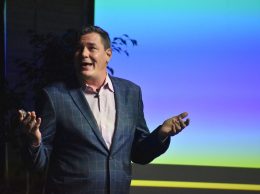Newsom issues COVID curfew for most of state
IN THIS ARTICLE
- Central Coast Topic
- pacbiztimes Author
By pacbiztimes Thursday, November 19th, 2020
Gov. Gavin Newsom and the California Department of Public Health announced a limited “stay-at-home order” requiring all non-essential work, travel and gatherings to stop between 10 p.m. and 5 a.m. for the vast majority of the state’s population.
The curfew order applies to all counties in California that are in the most restrictive, or purple, tier in the state’s pandemic reopening system, and will be in place from Nov. 21 through Dec. 21. It covers 41 of the state’s 58 counties, including San Luis Obispo, Santa Barbara and Ventura counties. All three counties were returned to the purple tier on Nov. 16 following a statewide spike in COVID-19 cases.
“The virus is spreading at a pace we haven’t seen since the start of this pandemic and the next several days and weeks will be critical to stop the surge. We are sounding the alarm,” Newsom said his Nov. 19 news release. “It is crucial that we act to decrease transmission and slow hospitalizations before the death count surges. We’ve done it before and we must do it again.”
According to the state, COVID-19 cases rose by about 50% during the first week of November. The California Department of Public Health also issued an updated mask mandate on Nov. 16, requiring people to wear face coverings outside of their homes with limited exceptions, such as driving in a car alone or with only members of their household, being in an office alone, actively eating or drinking, or being outside while social distancing.
“We know from our stay at home order this spring, which flattened the curve in California, that reducing the movement and mixing of individuals dramatically decreases COVID-19 spread, hospitalizations, and deaths,” California Health and Human Services Secretary Dr. Mark Ghaly said in the news release. “We may need to take more stringent actions if we are unable to flatten the curve quickly. Taking these hard, temporary actions now could help prevent future shutdowns.”











